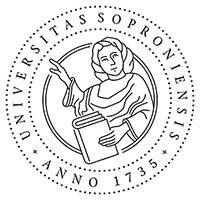A Psychological Phenomenon and its Presence in Children's Literature
Képzeletbeli barátok Matthew Dicks és Ben Rice regényeiben
DOI:
https://doi.org/10.17165/TP.2016.3-4.7Abstract
The aim of the authors of this study is to present the common features of the two young adult novels (Ben Rice: Pobby and Dingan; Matthew Dicks: Memoirs of an imaginary friend) highlighting the character and the role of ”imaginary friends”. Since psychological academic literature deals with this issue seriously (primarily in the United States), we first use these sources to get a clarified picture about the notion and the possible classifications of the imaginary friends. We illustrate it with case studies.
The second part of the study presents the chosen novels as well as the entities invented by the juvenile protagonists, referring to psychological literature, in order to indicate the significance of these characters in children’s lives.
References
Allan, J. G. – Fornagy, P. – Bateman, A. W. (2011). Mentalizáció a klinikai gyakorlatban. Budapest: Oriold és Társa.
Atkinson, R. C. – Hilgard, E. (2005). Pszichológia. Budapest: Osiris Kiadó.
Csányi, N. (é. n.): Asperger szindróma In: Pindur honlapja. [online] cop. [é. n.] http://www.pindur.hu/index.php/nevelunk/644-asperger-szindroma.html [2015. 02. 20.]
Dicks, M. (2012). Egy képzeletbeli barát naplója. Budapest: Kolibri.
Freud, A. (1936). The Ego and the Mechanisms of Defence. New York: International Universities Press.
Gombos, P. (2013). Max fura egy kicsit. In: Meseutca honlapja. [online] cop. 2013. 06. 11. < URL: http://meseutca.hu/2013/06/11/max-fura-egy-kicsit/ [2016. 09. 10.]
Hart, T. – Zellars, E. E. (2006). When Imaginary Companions Are Sources of Wisdom. Encounter; 19. évf. 1. sz. pp. 6–15.
Jellesma, F. C. – Hoffenaar, P. J. (2013). Parental website-descriptions of children’s imaginary companions. In: Psychologica Belgica, 53 évf. 1. sz. pp. 117–124. doi: https://doi.org/10.5334/pb-53-1-117
Juhászné Gáspár, D. (2007). Az Asperger-szindróma. In: fejlesztők honlapja [online] cop. 2007. 12. 30. https://fejlesztok.hu/hasznos-olvasmanyok/autizmus/64-az-asperger-szindroma [2016. 01. 12.]
Kádár, A. (2012). Mesepszichológia. Budapest: Kulcslyuk Kiadó.
Kádár, A. (2013). Senki sincs a sarokban, de hozzá beszél a gyerekem – mit tegyek? In: hvg.hu [online] cop. 2013. 12. 24. < URL: https://hvg.hu/plazs/20131220_Segitseg_kepzeletbeli_baratja_van_a_gyere [2016. 09. 01.]
Kovács P. (2012). Gyerekkori képzelt barátok. [online] In: felismeres.hu oldala. cop. 2012. cop. 2012. 09. 04. http://www.felismeres.hu/urlap/gyerekkorikepzeltbarat.pdf [2016. 09. 04.]
Lydon, D. (2011). Imaginary companions: are they good for children? In: Student Psychology Journal, II. évf. pp. 69–78.
Mérei, F. – Binét, Á., V. (1981). Gyermeklélektan. Budapest: Gondolat.
NINDS (2012). Asperger Syndrome Fact Sheet. In: National Institute of Neurogical Disorders and Stroke honlapja. [online] cop. 2012. október < URL: http://www.ninds.nih.gov/disorders/asperger/detail_asperger.htm?css=print [2015. 12. 20.]
Rice, B. (2002). Babó és Bigyó. Budapest: Ulpius-ház.
Rózsa, J. (2014). A képzeletbeli barát szerepe a gyermeki fejlődésben. [online] A Magyar Coachszemle honlapja. cop. 2014. 0 9. 30. < URL: http://coachszemle.hu/life/521-a-kepzeletbeli-barat-szerepe-a-gyermeki-fejlodesben [2016. 08. 28.]
Szekér Sz. (2011): Egyre többen fedezik fel, hogy Asperger-szindrómások. In: Origo honlapja [online] cop. 2011. 06. 27. < URL: http://www.origo.hu/egeszseg/20110627-egyre-tobben-kerik-felnottkent-az-aspergerszindroma-diagnozist-autizmus-spektrumzavar.html [2016. 09. 11.]
Szekér, Sz. (2012). Csak néhány évig élnek a képzeletbeli barátok. In: Origo honlapja. [online] cop. 2012. 05. 03. < URL: http://www.origo.hu/egeszseg/20120502-csak-nehany-evig-elnek-a-kepzelt-baratok.html [2014. 12. 28.]
Taylor, M. (1999). Imaginary companions and the children who create them. New York: Oxford University Press.
Taylor, M. (2003). Children’s imaginary companions. [online] In: Bayerischer Rundfunk honlapja. [online] München, cop. é. n. < URL: http://www.br-online.de/jugend/izi/english/publication/televizion/ 16_2003_1/e_taylor_childrens.pdf [2014. 12. 28.]
Taylor, M. – Mottweiler, C. M. (2008). Imaginary companions pretending they are real but knowing they are not. In: American Journal of Play, I. évf. 1. sz. pp. 47–54.
Vostrovsky, C. (1895). A study of imaginary companions. Education, 15. évf., pp. 383-398.
Wigger, B. J. See-through Knowing. Learning from children and Their Invisibile Friends. In: Journal of Childhood and Religion [online] cop. 2010. < URL: http://childhoodandreligion.com/wp-content/uploads/2015/03/Wigger-May-2011.pdf [2015. 03. 25.]
Downloads
Published
Issue
Section
License
Copyright (c) 2016 Gombos Péter, Sárosi Szilvia

This work is licensed under a Creative Commons Attribution-NonCommercial-NoDerivatives 4.0 International License.












